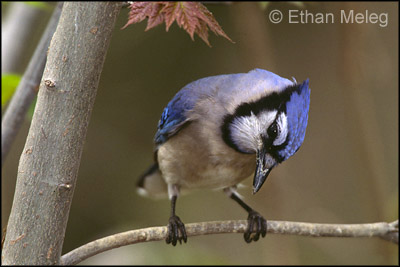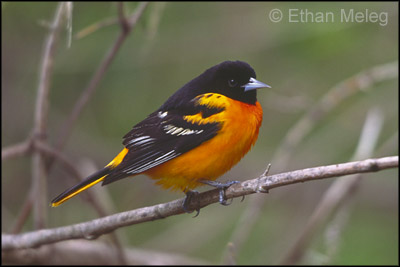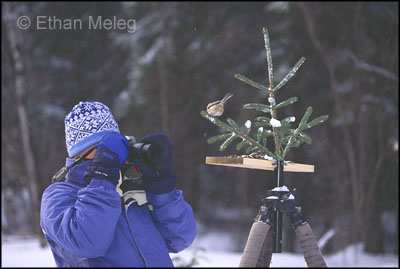

Set-ups for Songbirds

Nature photographers often claim that birds are the hardest things to photograph... especially songbirds. They're small, they move fast and they generally shy away from people. There's no doubt about it, getting a good shot of a songbird is something to be proud of! One well-known bird photographer says it aptly - he refers to his best songbird photos as 'the family jewels'.
So how is it that every time you open a birding or nature magazine, there are pages of stunning shots of songbirds? Is there something the pros know, that the rest of the world doesn't? What's the secret?
Most successful bird photographers I know were birders before they ever picked up a camera. They have an intimate knowledge of bird behaviour. They also tend to be patient and plan their photos in advance. More often than not, they know what and how they're going to photograph before they head out into the field. As the old saying goes, 'you create your luck.'
Feeder set-ups are one of the best examples of a 'planned approach' to photographing songbirds. You might be surprised to know that many of the great songbird photos you see in magazines and books were taken at or near feeders. Feeders attract birds within the range of your telephoto lens, and cause the birds to land in somewhat predictable spots. To put it simply, feeder set-ups make bird photography way easier!

There are a bunch of tricks you might consider using, to help increase your success when photographing birds at feeders set-ups:
1) Find places where birds are already accustomed to people and/or being fed, such as city parks or backyards.
2) Learn what types of food are preferred by the bird species you want to photograph. Bird feeding stores are excellent places to get this information.
3) Sudden movements scare birds away. Move extremely slowly, or better yet, shoot from a blind or an open window.
4) Study the light for several days before putting out your feeders and perches. Make sure they're in a spot that gets morning or afternoon light, depending on when you'll be shooting.
5) Try to position your perch in a spot that will result in a clean background for your photos.
6) Your own backyard is often the best place to attract birds to feeder set-ups!

About the Photos:
1) Blue
Jay, Wheatley, Ontario
Canon EOS 1N, 600f/4 with 1.4x teleconverter
I photographed this Blue Jay from an open window in my parents' house. There are
feeders all around the bird, and it always stopped on that branch before feeding
on the ground beneath the nearest feeder.
2) Baltimore Oriole, Wheatley,
Ontario
Canon EOS 1N, 600f/4 with 1.4x teleconverter
My parents put oranges in the tree next to their deck to attract orioles during
spring migration. I shot this bird from the comfort of a lawn chair on their
deck (how could life get any better?). There's an orange just to the right of
the bird, and he faithfully landed at this spot before jumping to the orange.
3) Black-capped Chickadee on
Tripod-Feeder setup, Algonquin Park, Ontario
This is my all-time favourite bird photography setup, which has produced
many of my best songbird photos. It's very simple: mount a small platform to an
extra tripod, stick a perch on it and offer a bit of food on the platform. You
can easily move the whole rig to make sure it's in good light, and to position
it for clean backgrounds. I have a wide selection of perches to add variety and
uniqueness to the images.
Happy shooting!
This
site © Ethan Meleg, all rights reserved. No form of reproduction,
including copying or saving of digital image files,
or the alteration or manipulation of said image files is
permitted. Any unauthorized use of these images will be
prosecuted
to the full extent of federal copyright laws. Site design and
maintenance by Ethan Meleg.